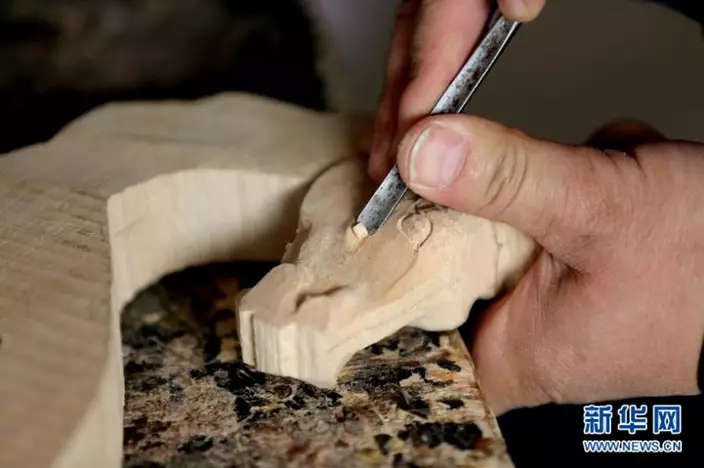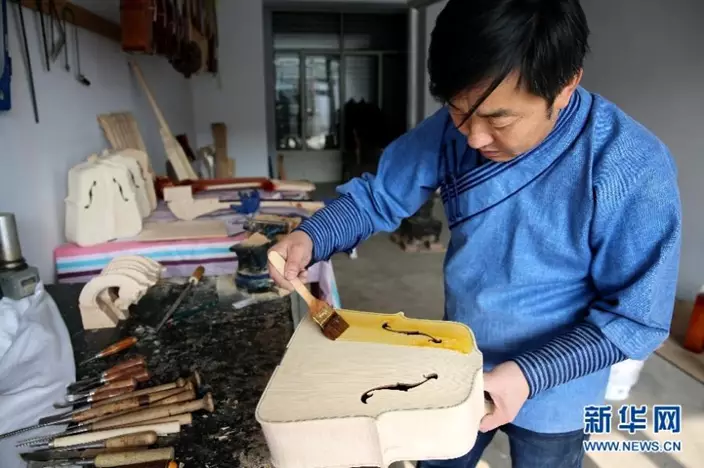The 38-year-old luthier Guang Hui has been making matouqins, a two-stringed instrument with a scroll carved like a horse’s head, for nearly 12 years and is proficient in the arts of carving, polishing and painting.

Guang Hui carves the wood on part of a matouqin at his workshop in Hohhot, Nov. 30. (Photo/Xinhua)
In 2006, Mongolian matouqin music was listed as a national-level intangible cultural heritage approved by the State Council.

Guang paints a matouqin at his workshop in Hohhot, Nov. 30. (Photo/Xinhua)
"Matouqins are a proud Mongolian tradition and I want to promote them to future generations," Guang said.

Guang adjusts a matouqin at his workshop in Hohhot, Nov. 30. (Photo/Xinhua)
A matouqin usually involves a variety of wooden materials including red sandalwood, maple wood, and spruce wood. It is a lengthy process to make one, including lineation, cutting, rough carving, elaborate carving, polishing, painting, buffing, waxing and assembling. Nowadays, machines can take care of many parts of the instrument-making process, however, manually-produced matouqins are still of higher quality.

Matouqins displayed at Guang's workshop in Hohhot, Nov. 30. (Photo/Xinhua)
While the machine is excellent, it can't replace the quality associated with manual work, added Guang.


